

1.Basic of Water
2.Water Condition
§1.World Water Crisis
・Health damage by
lack of water
・Change of Water resources
site due to global warming
・Lack of agricultural water
by underground drought
・Decline of biodiversity due to
water shortage and pollution.
・Area conflicts by
lack of water
・Virtual water trade
・Future prospects
§2.World Water Aspect
●China
●Japan
§3.Water Issue
・Cause and current condition
of water issue
・Water issue in rivers
・Waterissue in lakes・marshes
・Water issue in ocean
-Red tide
§4.Cause and Condition
・Global warming
・Ozone layer depletion
・Deforestation
・Desertification
3.Environment Measure
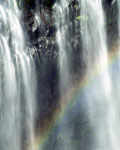
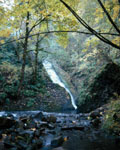

|
Chapter 2 Water Condition

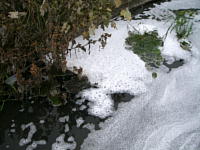
The main issue in water crisis is water issue. Water contamination in water environment such as rivers, lakes, and marshes
has been progressed by population growth, population concentration, increase
of contaminated loads from industries, as well as delay of measure for
these problems. Consequently, these contaminated matters are not treated
perfectly by natural purification ability. Water contamination also occurs
in the ocean connected to the rivers.
These water contamination issue has large effect in life and industry,
changes ecosystem, and destroy living place for aquatic organisms, thus
decreasing aquatic resources.
Cause and current condition of water environment pollution
Since water contamination has serious effects on human body, life, and
other aquatic organisms, many countries such as Japan regulate water quality
standard as environment standard based on Basic Environment Law. In Japan,
1971 when environment standards were established, environment standard
achievement rate of BOD (Biochemical Oxygen Demand) in rivers were changed largely. In 2007, it increased to 90% though its
rate of COD (Chemical Oxygen Demand) in lakes and marshes was very law. Although it has been improved for several
recent years, it is still 50%
Nutrient enrichment in closed water area such as lakes, marshes, inner bay, and inland sea has progressed. Compared
the achievement of the environment standard in rivers and ocean, it is
still very low, especially in lakes and marshes where water quality improvement
is urgent.
When we look at the contamination loads depending on the source, it seems
that point source decrease while non-point source doesn't decrease yet, and non-point loads amount in the total loads tends
to increase.
In Water Quality Environment Standards, there are two items established
by Ministry of the Environment in Japan. They are "Environmental Quality Standards Concerning the Protection of the Human
Health" and "Environmental Water Quality Standards Concerning the Conservation of the
Living Environment." In the former standards, 26 types chemical matters such as cadmium
are targeted while the latter classifies the environment items depending
on rivers, lakes, marshes, and ocean.
Ministry of the Environment "Environment standards related to water
contamination"
Contents of Water Quality Environment Standards,(Living environment)
| Items |
Details |
| pH |
Hydrogen ion concentration index. It indicates the level of acidity and
alkaline. |
| BOD |
BOD The amount of oxygen which is used by microorganisms in the water to
breathe and decomposition. |
| COD |
COD Oxidizing agent amount which is consumed when heating decomposition
of organic matters in water. It is used for index of organic matter water
pollution, and is the environment standard in lakes, marshes and ocean. |
| SS |
The abbreviation of suspended solid. It indicates the matters which is
more than 1 mm and less than 2 mm in water.
|
| DO |
Dissolved oxygen. It is oxygen amount dissolved in the water. Mainly it
indicates the water pollution due to organic matters. |
| Number of colitis germ legions |
Number of E. Coli and similar bacteria. It indicates pollution due to human
and animal wastes. |
Total Nitrogen
(T-N) |
The general name of compound contained nitrogen. Too much amount of nitrogen
causes the progress of nutrient enrichment and overgrowth of phytoplankton. |
Total Phosphorous
(T-P) |
The general name of compound contained phosphorous. Too much amount of
nitrogen causes the progress of nutrient enrichment and overgrowth of phytoplankton. |
| Total Zinc |
Total zinc the general name of compound contained zinc. Too much amount
of zinc has effects on aquatic organisms. |
There are several issues in contaminated rivers, lakes, and marshes, such
as emission of offensive odor, deterioration of growth environment for
aquatic organisms, serious impact on ecological system and lack of water
quality for industrial, agricultural, and living uses. Thus, the contaminated
water poses problems not only for living things, industrial, and economical
activities, but also for environment. Furthermore, apart from the phenomena
occurring in flowing water, water quality problems occur in stagnant water
areas.
Weir upper stream stagnant water areas in dam lakes, lakes, and marshes,
and rivers have self-purifying function which suspended matters are settled
and removed by zero flow velocity and stagnant condition. However, if there
is point source pollution load upstream or if water containing nitrogen
and phosphorous flows to stagnant area due to pollution load of non-point
source, the area has enough sunlight and time for propagation, which causes
nutrient enrichment.
There are various factors that affects on water quality in lakes and marshes,
These factors can be roughly divided to 3 main types; "external loading", "internal loading", and "direct loading." External loading streams from watershed, while internal loading
is caused by living substances in lakes and marshes. Direct loading comes
from rainfall.
Example of loads affecting on lakes and marshes water quality
| Clasification |
Example of loads |
| External load |
point source load |
・daily wastewater
・industrial wastewater
・livestock industrial wastewater |
| non-point source load |
・urban area
・agricultural area
・forest |
| Internal load |
・from bottom sediment
・production in lakes・marshes |
| Direct load |
・rainfall
・farming |
※ External load :Load which flows into lakes and marshes from rivers
Internal load :Load which organism production in lakes and elution from
sludge
Direct load :Load from rainfall or farm in the lakes, including load
from underground water.
Point source load :Load which can clasify the point of contaminations
Non-point source load :Load which is difficult to clasify the point
of contaminations.
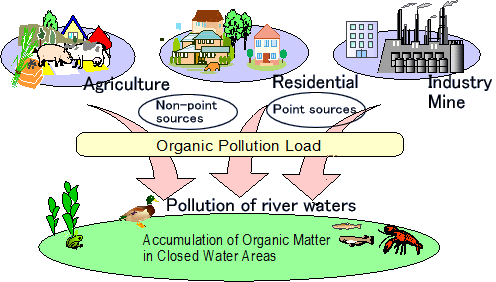 |
| Cause of Water Contamination |
Water issue in rivers
Rivers are used to have a function purify water quality. Oxygen dissolves
from air to water through water surface. Vegetation and microorganisms
clean up the pollutants in rivers. Dissolution efficiency changes depending
on the speed of stream. In rapid stream, dissolution efficiency is high
since ruffle is large. In still-water surface, on the other hand, dissolution
efficiency is low.
When dissolved oxygen (DO) is 8.84 mg/l in clean water at 20℃, oxygen becomes saturated. In such
area, microorganisms are activated. Activated microorganisms decompose
and elaborate contaminated substances, which leads purification of water.
The amount of oxygen which is required by microorganisms to decompose
contaminated substances increases with increasing the amount of contaminated
substances in rivers. If the amount of oxygen used by microorganism exceeds
dissolved oxygen in the river, the river has too low oxygen level to provide
oxygen toward aerobic organisms. That leads aerobic organisms to die. Without these living things, contaminated substances are not decomposed
and are accumulated in the river. Contaminated rivers are not transparent
and have a bad odor.
Such contaminated rivers make various negative impacts.
●The impact of water contamination in living areas
Contaminated rivers lessen the clarity of the water and release strong
odor. In such rivers, there is a loss of good-quality spatial environment.
This phenomenon tends to occur in lowland still-water rivers located in
densely-packed urban central area.
●The impact of water contamination on aquatic organisms
DO is fundamental for the fish and aquatic organisms. If DO is less than
3mg/l in a river, the river is not suitable environment for living organisms
and will become inanimate environment.
Moreover, contaminated substances lower permeation rate of solar light.
Water plants are not able photosynthesize without enough solar light, which
leads absence of oxygen in stream bed. The lack of oxygen causes root rot.
The other issue is that harmful and toxic substances or heavy metals inflow
into rivers. There are several cases that fish deadens due to operation
mistakes in factories. In more serious cases, harmful and toxic substances
constantly flow into rivers due to the lack of regulation. That causes
rivers to be chronic inanimate environments.
●The impact of water use
Water is the most frequently used as agricultural water. Water contamination
causes organic failure, nutrient salt failure, and heavy metal failure.
Organic rich water induces soils to be anaerobic and roots to rot. Nitric
rich water causes excessive leaf growth in wetland rice. When we use river
water which is contaminated by pathogenic bacterium or heavy metal as agricultural
water, it might have serious impact on human bodies.
Cooling water and washings are examples of industrial water uses. The
most serious impact of water contamination on industrial water is reduction
of amount of passing water due to fouling in plumbing. Moreover, plumbing
defects by electric corrosion are also serious problem. Thus, water quality
items which cause fouling and electric corrosion are the environmental
indicators. In raw material water and washings for precise instrument and
electron progressing materials, the indicators are established according
to application.
Water issue in lakes and marshes
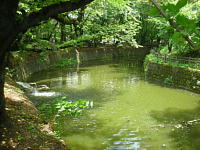
Lakes and marshes are the stable sources of valuable water resource. These
places are also suitable place for recreation. Thus, our daily lives are
supported by lakes and marshes.
However, before the establishment of Law Concerning Special Measures for
Conservation of Lake Water Quality in 1984, the amount of pollution loads
increased with the development of social and economical activities around
lakes and marshes.
Serious water contamination induces water issues such as obstruction of
water supply, fishery damages, and decline in value of tourism.
Water contamination leads nutrient enrichment, which then induces the
following problems
●The impact of water contamination on drinking water
・Foul smell and taste issue
・Filtration issue
・Elution of nutrient salts, Fe, and Mn issue
●The impact of water contamination on recreational use
・Blue green alga
・Fresh water red tide
●Nutrient enrichment and blue-green alga
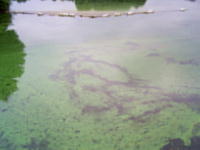
Nutrient enrichment is the phenomena that the huge growth of aquatic plants
and alga due to nutrient salts such as phosphorous and nitrogen.
Nitrogen and phosphorous are contained in industrial and daily wastewater.
By flowing these artificial phosphorous and nitrogen into closed water
area such as inner bay and depositing, alga abnormally increase.
From Spring to Summer, when the temperature of surface of water rises,
there are different temperature layers in the water. On the surface, temperature
increases while temperature decreases in the deep area. From July to August,
the temperature of the surface approach its peak, it is hardly occur the
water circulation at the top to the bottom. Then, there is less oxygen
in the bottom of the water thus worsening water quality.
In such condition, if nutrient enrichment progresses, phytoplankton abnormally
increases on the surface. That leads alga bloom which green colors spreads out on the surface. The main phytoplanktons
casing algal bloom are dinoflagellate and cyanobacterium. In these plankton,
Mycrocystis aeruginosa of cyanobacterium is called blue-green algae.
The problems caused by blue-green algae
・Increase pH level
・Decrease DO
・Death of lots of fish
・Bad odor
・Filtration deficit in purification process
●The impact of water contamination on aquatic organisms
Since aquatic organisms include various types such as phyto/zoo plankton,
benthic livings, fish, and reed, the impact of water contaminations on
these organisms are different.
The types of fish change according to the level of nutrient enrichment.
In addition, temporal withering of the large amount of phytoplankton lowers
the level of oxygen, which causes anoxic water. Anoxic water, then, leads
mass mortality of organisms.
●The impact of water contamination on fishing industry
Damages of fisheries by water contamination are reported everywhere.
In addition to direct damage by contaminated substances, fish are chronically
influenced by algal blooms.
The factors affecting on fishing industry are the following.
・The effect of water temperature
・The lack of DO
・The effect of chlorine
・Nutrient enrichment
・Chemical agent
・Contamination by dioxin
Water issue in ocean
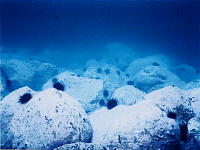
●Characteristics of water issue in ocean
The serious polluted condition of ocean by rapid development of developed
countries in 20th century has been improved except sudden accidents. However,
all wastewater is finally discharged to the ocean, so the root of problem
is not solved yet. Also, developing countries in Asia and Africa have rapidly
economically develped and discharged large amount of polluted matters with
the industrial production. Thus, ocean pollution has progressed in world
wide.
In coast areas, land reclamation and dredging have been conducted continuously
for urban development and disaster prevention work, and lots of artificial
buildings were constructed. Even in other areas such as inner bay for fish
farming, environment destruction has progressed due to densely packed farming.
Thus, these areas becomes sea deserts where seaweed dead, and that leads
the reduction of abalone, sea egg, and fishes.
On the other hand, large amount of nitrogen and phosphorous have been
discharged from our rich lives, and that destorys the balance of ecosystem
in the ocean. Nutrient enrichment also emerges and causes red tide due
to the overgrowth of phytoplankton. Moreover, when it becomes the lack
of oxygen in the bottom of ocean, blue tide which emerges due to the water
mass without oxygen in summer season. Nutrient enrichment leads overgrowth
of sea stars and jelly fish and damages seaweed and shelf of coral. Due
to these factors, wetland area in the ocean has been destroyed and expands
sea desarts.
●The factor of marine pollution
・Chemical substances
Chemical substances such as agricultural chemicals, synthetic fiber, and
plastics, run into sea areas by rain. Chemical substances were found in
rivers and marine organisms including fish.
・Heavy metals
Consuming large amount of organic mercury and cadmium in seawater causes
pollution disease.
・Endocrine disrupters
To prevent shellfish from adhering to ships and preserves, tin compounds,
such as tributyltin and tryphenyltin, are used. Marine organisms which
are vulnerable to pollution reduces the amount. Especially, genital anomalies
in shellfish were reported.
・Oil contamination
Main emission source is ships. The causes of oil spill in sea are not
only marine accidents, but also ballast water and washing water for ships.
・Biotic contamination
Ballast water is the sea water which is used to maintain ship's stability.
Since ballast water is taken in the coastal waters in one place and discharged
in other place, it might cause serious biotic contamination due to migration
of toxic algae and shellfish.Thus, solving ballast water issue is regarded
as one of international agendas
Reference: 「CarbonFiber Water Purifiation Technology Guidline −Environment−」
(CarbonFiber Make Water Use Association)
●Ocean pollution phenomena
◇Sea desert
The growth of seaweed is required for rich brackish-water region where
fresh water and sea water mix up. Supplying minerals such as iron from
inner area is important for the growth of seaweed. In Mountains in inner
land area, fallen leaves become leaf soils and lands contains minerals
such as iron. Rain water wash the surface of mountain and the water penetrate
under the ground which gradually goes to rivers. Thus, the water countais
lots of minerals such as iron, and finally goes to the ocean. The seaweed
in brackish-water region absorbs the wate and gorws.
However, due to urban development in inner land, dams have been constructed
in rivers area as well as there were several construction in rivers. As
the result, most minerals form lands tend not to be discharged to the ocean.
Moreover, forests which is the source of mineral have not been taken cared
due to the reduction of forest industory. Mineral iron contained in forests
are not supplied to ocean, and that causes not to grow seaweed. Thus, sea
deseart emerges in everywhere.
◇Red tide
In developed countries such as Japan, point source loads from specific
area decreased due to sewage construction and development of wastewater
treawtment technology. Thus, water pollution due to organic matters and
chemical substances has been improved. However, non-point loads from waste
gas and agriculutral wastewater doesn't decrease, and the waste amount
of nitrogen and phosphorous increases. On the other hand, in developing
countries where has rapidly ecnomically developed, treatment plants are
not constructed yet due to large amount of industrial production and improvement
of life environment. Thus, lots of contaminated matters are discharged
without treatment. Nutrient salts such as nitrogen and phosphorous are
discharged from rivers to ocean, and brackish-water area becomes nutrient
enrichment, and overgrowth of phytoplankton leads "red tide."
For more information about Red tide Click!
◇Blue tide
When large amount of phytoplankton due to red tide dead and deposits in
the bottom of the ocean, large amount of oxygen are used to decompose these
matters. As a result, the bottomo of ocean becomes lack of oxygen. Also,
due to filling the land and dredging for construction for large ship lines,
there are large holes in the bottom. In such holes, sea water doesn't move
and it becomes lack of oxygen. Such lack of oxygen water contains hydrogen
sulfide. When hydrogen sulfide reacts with oxygen in the surface of ocean,
emerald green "blue tide" emerges.
|
|








